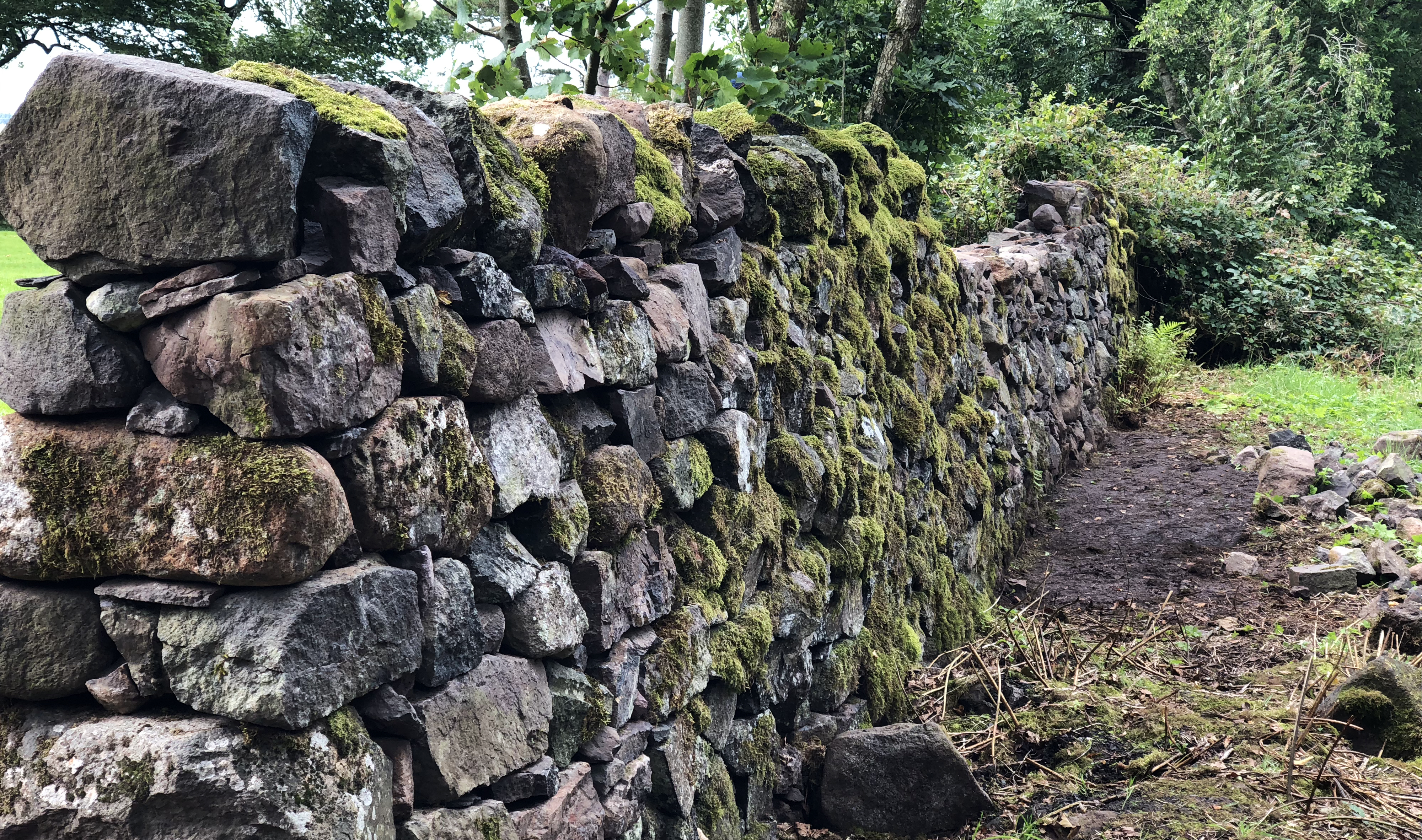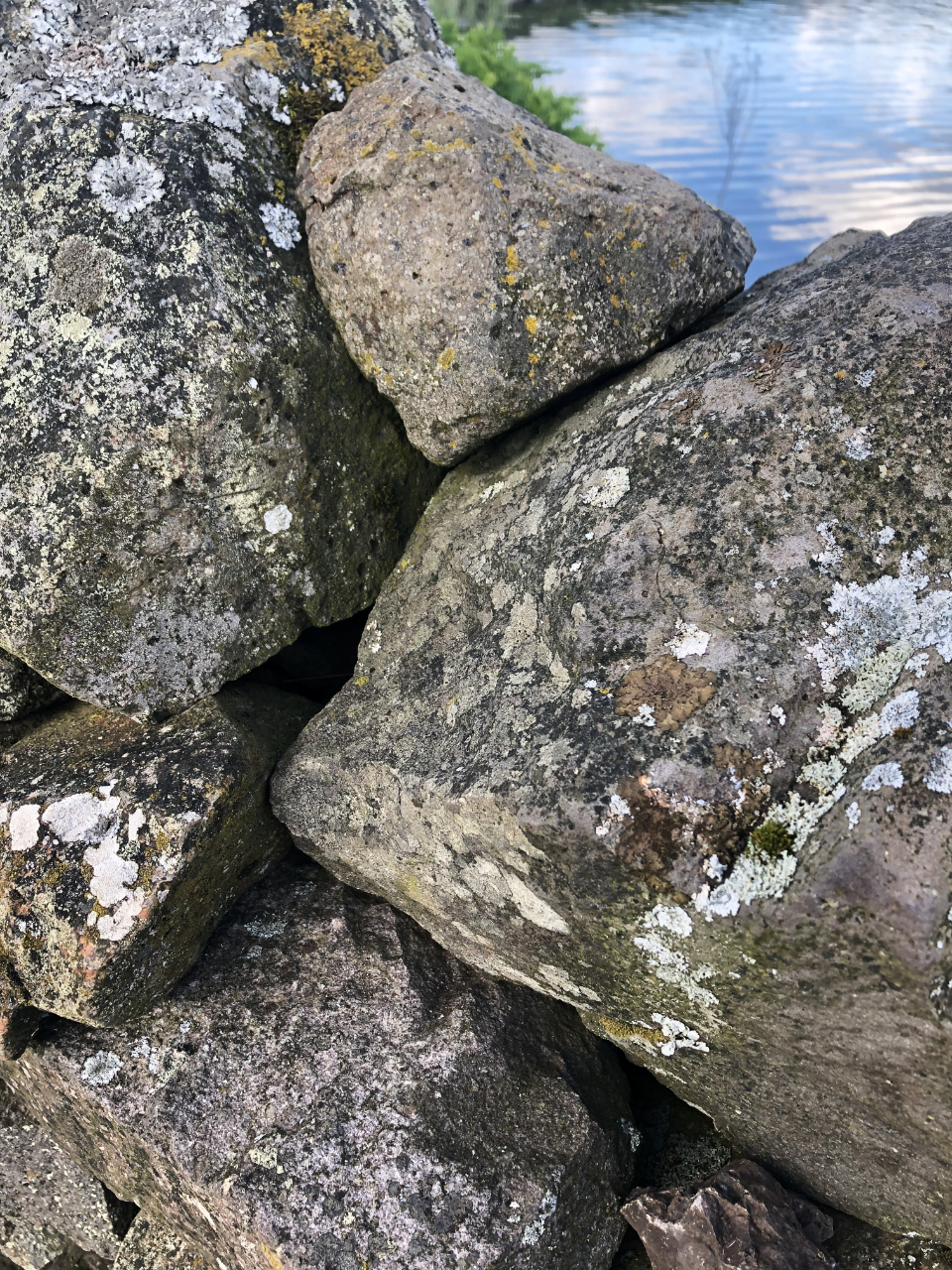Benefits
There are many environmental benefits to Dry Stone Walls
Local
Walls are often built from local labour and materials. This reduces travelling and transport distances and this in turn means less fuel.
No cement or mortar
Dry Stone Walls don't need cement foundations or use mortar to bind the stone - they use natural friction and easily learned techniques to keep the stones bound together. The manufacture of cement consumes raw materials, large amounts of energy, and produces many emissions, odours and noise. The emissions from cement plants which cause greatest concern are dust, carbon dioxide CO2, nitrogen oxides (NOx) and sulphur dioxide (SO2). For every tonne of cement manufactured and used in a traditional wall, approximately a tonne of carbon dioxide is released into the atmosphere.
Durable and Flexible
A well built wall should last a long time with minimal maintenance - at least 100 years, without requiring large repairs. They don't need expansion joints, and are self-draining - meaning reduced damage from frost, ground heave, or subsidence.
Sustainable
Dry stone walls have been built with local stone from fields or from natural quarried stone. They can provide durable stock-proof fencing without any manufacturing or factories required. No wire or wooden fence posts to make or replace when at the end of their useful life.
Encourages Widelife
Walls are a haven for mice, voles, birds, lizards, toads, newts, insects, mosses and lichens.
Dry stone walls can provide a range of microclimates, with south-facing walls providing warm, sunny positions for warmth-loving insects and basking (and hibernating) reptiles. The presence of a rough grass strip immediately adjacent to dry stone walls is particularly beneficial for amphibians, reptiles and for some invertebrates. Other nooks and crannies provide damp, sheltered areas for insects, while larger cavities can even provide nesting areas for songbirds and small mammals. However, much of this value quickly declines when walls are not maintained and sections collapse. Walls, like hedges, support the maximum amount of wildlife when they are mature, but before they become derelict. Once a wall drops below 600mm in height, the number of species using it will decline. Rebuilding is initially destructive to biodiversity, but within a few years the wall will have been re-colonised.
Windbreaks
Walls can provide much needed respite from windy conditions in harsh upland conditions for livestock, Draughts coming through a wall can help dry sheep huddling next to it.
Asthetic
Dry-stone walls add beauty and a unique character to a landscape with their local, natural stone. They have a classic design, so beautiful they look good even when photographed in black and white.



